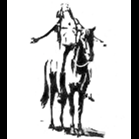Announcements
-
Topics
-
Latest posts...
-
177
Are You A Sexpat Or Do You Ride The Backwards Morality Train?
That's the point. These people have burned their bridges and don't have any emotional connection with anyone. -
1
Police Officer Cries Over Injured Son Following Car Accident: Sisaket
lots of car crashes lately any reason ??? -
44
Thailand triumphs in UN Human Rights council bid
The perfect example is the bandits among the Security Council member states. Waging war of invasion for territorial expansion. And building up military fortification in the middle of the Open Sea. -
177
Are You A Sexpat Or Do You Ride The Backwards Morality Train?
I don't have anything in common with filthy sexpats who inhabit bars. What evidence do you have that I'm a sexpat? You have nothing. Just a perfect example of you trying to drag people down to your level.- 1
-

-
177
Are You A Sexpat Or Do You Ride The Backwards Morality Train?
human beings are not rabbits. we need emotional connections and bonds with people. not just sex. the worst though is fake marriages, people who get married only for money. P4P is one step above that. but try to find love if you can. -
98
Drunk Indian Tourist Assaulted After Harassing Woman on Pattaya Beach
He asked for a photo.. nothing more. -
4
Top 10 Thai Universities Ranked Globally, Chulalongkorn Leads
To think I spent a lot of money on sending two kids from the family to university. -
2,620
Thai gov. to tax (remitted) income from abroad for tax residents starting 2024 - Part II
Do you agree with this? 1 - the person must be Thai tax resident 2 - the transaction must benefit the cardholder for personal income tax rules to apply (as opposed to any Gift Tax aspect). 3 - the merchant/payee must be based in Thailand, unless overseas goods or services are acquired that are shipped to or have their end point in Thailand. 4 - the funds used (to pay the bill) must be Thai assessable and not exempt Where the rules may diverge is if a credit card liability is converted to another form of loan. A credit card transaction is variable limit, revolving credit agreement whereas personal loans are fixed and for a specific purpose, typically of a fixed duration. But that aspect is downstream and not really part of the today discussion about credit card transactions. Also, I think the fact the purchase is made using revolving credit is a red herring. Subject to the above rules, the contract is formed in Thailand, there is offer, acceptance and consideration in Thailand, the merchant is paid here and the CC card holder receives delivery of their product or services here. This differs significantly from a foreign bank loan, to say purchase a condominium in Thailand where there is a fixed loan agreement and the purchase is for a specific item and there is a dedicated loan agreement. Some Examples A Thai tax resident uses his UK bank CC to buy a sports car which is then shipped to Thailand. Depending on the nature of the funds used to pay the CC bill, the funds used to make the purchase may be assessable to Thai tax. A Thai tax resident uses his foreign CC to pay his rent in Thailand every month. Depending on the nature of the etc etc etc (as above). A Thai tax resident uses his foreign CC to purchase an overseas package holiday, via a Thai based travel agent. Depending on.... (as above) Same as above but the travel agent is located in the UK. Those funds are never remitted to Thailand so cannot be regarded as Thai tax assessable. A Thai tax resident uses his foreign CC to purchase a Gift from overseas, for his Thai resident spouse. which is then shipped directly to his partner here. The present can be considered under Thai Gift Tax rules which means the partner has no potential tax liability. But the purchaser of the Gift still needs to consider the nature of the funds used to pay the CC bill. If they are Thai tax assessable, he is liable to tax on that purchase, in the same way that he would had he remitted assessable income to his spouse. Same as above but the overseas spouse is now just an overseas "anyone" and the gift, purchased overseas, is shipped directly to them overseas. Neither the gift nor any funds are remitted directly to Thailand plus there is no personal consideration, ergo, the cost of the gift is neither tax assessable in Thailand nor applicable under Thai Gift Tax rules. -
2,620
Thai gov. to tax (remitted) income from abroad for tax residents starting 2024 - Part II
How do you know this is very common? The question whether this is common has come up many times in the tax threads, i never saw an answer. I don't doubt what you say, just interested how you know.- 1
-

-
177
Are You A Sexpat Or Do You Ride The Backwards Morality Train?
of course you do -
17
Porked & busted: Thai woman nabbed for telling ‘pork’ pies 208 times
Eating some animals is disgusting....but I am even less keen on eating insects. I ate a fried locust once, about what you would think, pretty bland and awful. I also ate a rat, which was totally ok, nice actually. -
58
Causes of High Electricity Bills in Thai Apartments
My man charges 2500 to fit and fill with gas, 500 to clean. The one arriving today was 7239 ! -
177
Are You A Sexpat Or Do You Ride The Backwards Morality Train?
I also know people who, after suffering a loss, came to Thailand, found themselves a woman, took them back to the country and live happily ever after. I would not call such a person a sex tourist. They have good and honest intentions. I refer to the folk who are barely one step above rapists and proud of it. -
965
Its Happening - Law to Tax Overseas Income Now in Progress
That is with in 2 (two) weeks very quick and easy to get documentation from my own computer only! -
177
Are You A Sexpat Or Do You Ride The Backwards Morality Train?
The term "sexpat" was almost certainly coined by a man hating bull dyke of a western feminist. It applies to anybody travelling abroad for the purpose of having sex with a foreign woman The "distinguishing features" you mention were not part of the original description. those adjectives have been added by other sexpats ( like @NowNow) in a pathetic attempt to set themselves up on their moralising soapbox . and distance themselves from others who actually have more in common with him than he cares to admit
-
Registering Non-Traditional Trademarks In Thailand
-
Recently Browsing 0 members
- No registered users viewing this page.
.png.3b3332cc2256ad0edbc2fe9404feeef0.png)






Recommended Posts
Create an account or sign in to comment
You need to be a member in order to leave a comment
Create an account
Sign up for a new account in our community. It's easy!
Register a new accountSign in
Already have an account? Sign in here.
Sign In Now